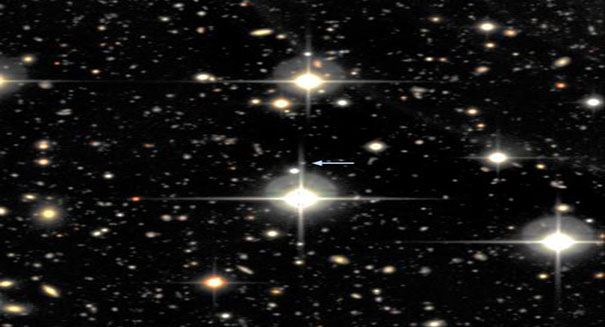
Scientists find proof that superluminous supernovae are the result of the creation of magnetars
Supernovae are cosmic explosions that are, as the name suggests, larger than run of the mill novae. Though they may only burn for months or even weeks, during this interval a supernova can radiate as much energy as the Sun is expected to emit over its entire life span. Now, it looks like we have a couple more for the record books: Astronomers affiliated with the Supernova Legacy Survey (SNLS) have discovered two of the brightest and most distant supernovae ever recorded. They’re located 10 billion light-years away and are a hundred times more luminous than a normal supernova.
Supernovae are usually caused by giant stars collapsing into neutron stars or black holes, and in this case that has scientists scratching their heads. According to them, the normal mechanism for creating supernovae can’t explain the exceptional brightness of these two. They’re so bright that when they were discovered in 2007 and 2007, astronomers weren’t even sure of what exactly they were.
“At first, we had no idea what these things were, even whether they were supernovae or whether they were in our galaxy or a distant one,” said lead author D. Andrew Howell, a staff scientist at Las Cumbres Observatory Global Telescope Network (LCOGT) and adjunct faculty at UC Santa Barbara. “I showed the observations at a conference, and everyone was baffled. Nobody guessed they were distant supernovae because it would have made the energies mind-bogglingly large. We thought it was impossible.”
One of them, given the catchy name “SNLS-06D4eu,” is so bright that it’s given rise to an entire new class of supernovae, called “superluminous supernovae.” These two new examples belong to a special subclass that contain no hydrogen.
The new study finds that the supernovae are likely powered by the creation of a magnetar, an extraordinarily magnetized neutron star spinning hundreds of times per second. Magnetars are incredibly dense, with the mass of the Sun packed into a star the size of an Earth city. Though magnetars have been postulated as the source of superluminous supernovae, this is the first study to match observations with models of what such an explosion might look like.
“What may have made this star special was an extremely rapid rotation,” said Daniel Kasen from UC Berkeley and Lawrence Berkeley National Lab. “When it ultimately died, the collapsing core could have spun up a magnetar like a giant top. That enormous spin energy would then be unleashed in a magnetic fury.”
The supernovae are so far away that the ultraviolet (UV) light emitted in the explosion was stretched out by the expansion of the universe until it increased in wavelength into the part of the spectrum our eyes and telescopes on Earth can see. This explains why the astronomers were initially baffled by the observations; they had never seen a supernova so far into the UV before.
The supernovae exploded when the universe was only 4 billion years old, and the light is just now reaching us. “This happened before the sun even existed,” Howell explained. “There was another star here that died and whose gas cloud formed the sun and Earth. Life evolved, the dinosaurs evolved and humans evolved and invented telescopes, which we were lucky to be pointing in the right place when the photons hit Earth after their 10-billion-year journey.”
“These are the dinosaurs of supernovae,” Howell said. “They are all but extinct today, but they were more common in the early universe. Luckily we can use our telescopes to look back in time and study their fossil light. We hope to find many more of these kinds of supernovae with ongoing and future surveys.”
Leave a Reply